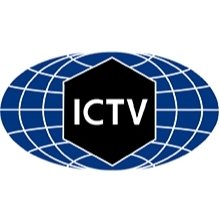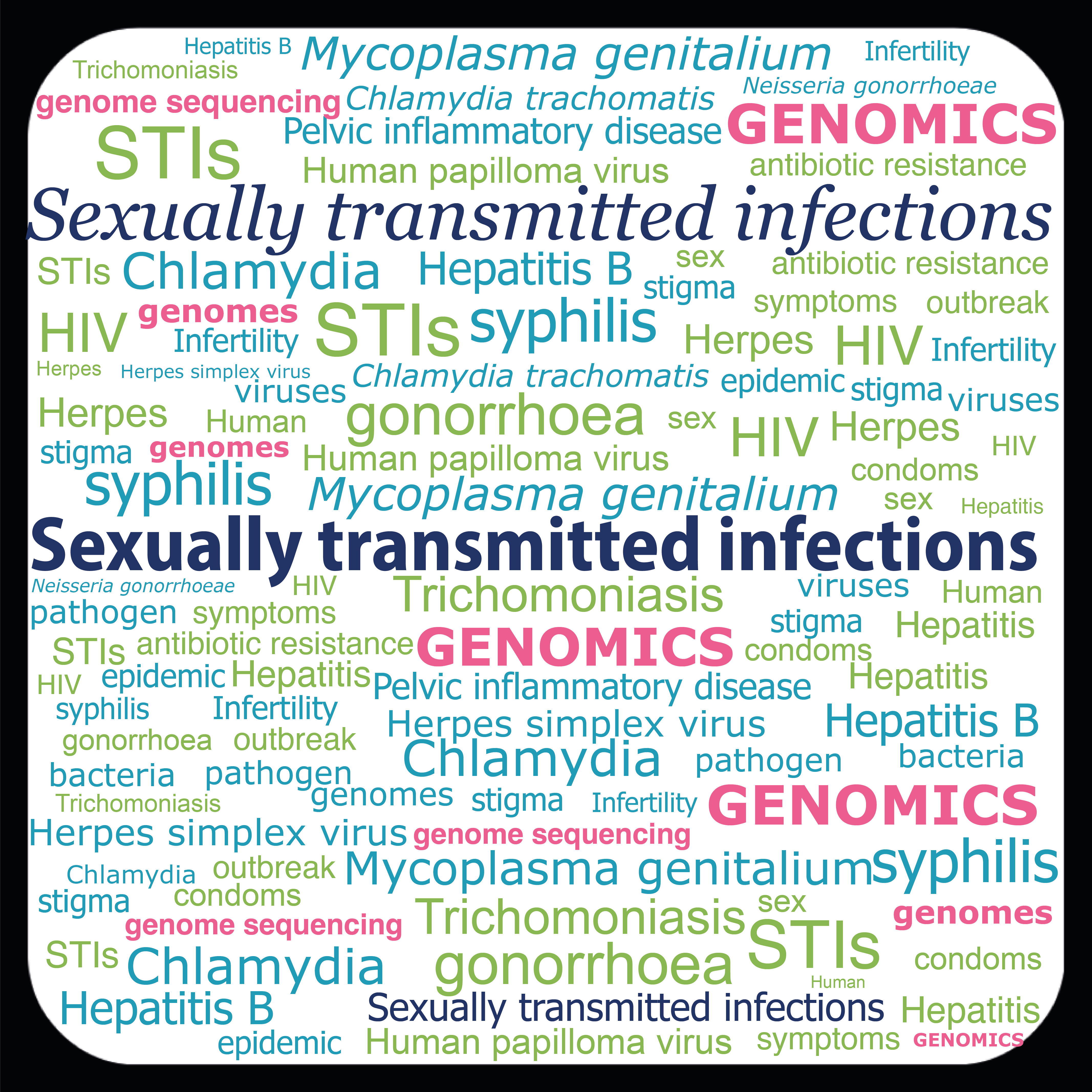Collections
Browse our collections – bringing together peer-reviewed content from across the Society’s publishing platform on a range of hot topics and subject areas.
21 - 40 of 56 results
-
-
Genomics, Epidemiology and Evolution of Campylobacter, Helicobacter and Related Organisms
More Less
The Campylobacterales are typically microaerophilic species that are often host adapted with the potential for zoonotic infections. The order includes Campylobacter which is the most common bacterial source of gastroenteritis worldwide; Helicobacter which have been associated with peptic ulcers, chronic gastritis, duodenitis, and stomach cancer; the veterinary and clinical pathogen Arcobacter and other related organisms. In conjunction with recent conferences, we present a collection of contemporary studies investigating the genomics of these organisms, guest-edited by members of the conference organising committees: Dr Beile Gao (CHRO-2022; Chinese Academy of Sciences); Dr Ben Pascoe (CampyUK-2021; University of Oxford) and Professor Sam Sheppard (Ineos Oxford Institute, University of Oxford). The Genomics, epidemiology and evolution of Campylobacter, Helicobacter and Related Organisms collection will bring together recent advances that use genomic data to advance understanding in the field. Wide-ranging contributions include findings from active national surveillance programs, comparisons of local and global variations in population structure, studies of antimicrobial resistance emergence and spread, core and accessory genome evolutionary analyses, pathogenicity studies, investigations of plasmids and mobile elements, and genome rearrangement, editing and/or methylation studies.
-
-
-
Global Pneumococcal Sequencing collection
More Less
Streptococcus pneumoniae is a leading cause of pneumonia, septicaemia and meningitis in young children. The global deployment of pneumococcal conjugate vaccine (PCV) which targets up to 13 of the >100 serotypes has effectively reduced the incidence of pneumococcal disease in children worldwide. However, there are still ~9 million cases of disease and over 300,000 deaths annually, in part due to replacement with non-vaccine serotypes and persistence of vaccine serotypes.
The Global Pneumococcal Sequencing Project (GPS) is a worldwide genomic surveillance network of >100 scientists. The project is set out to investigate the adaptive changes in pneumococcal populations before and after the vaccine introduction through whole-genome sequencing. At present, the project has sequenced >26,000 pneumococcal isolates from >50 countries and identified emerging lineages with multidrug resistant and high virulence comprising the benefit of PCV programme at international level.
This collection includes genomic surveillance analyses at the national-level and captures important insights, including identification of emerging serotypes and lineages after vaccine implementation. Such insights can inform vaccine use at the national level, and the design of future vaccines. Many of these studies were led by in-country partners, working closely with the GPS team, to enhance local capacity for future genomic surveillance of pathogens.
-
-
-
ICTV Virus Taxonomy Profiles
More Less
Journal of General Virology ICTV Virus Taxonomy Profiles are a freely available series of concise, review-type articles that provide overviews of the classification, structure and properties of individual virus orders, families and genera.
ICTV Virus Taxonomy Profiles are written by the International Committee on Taxonomy of Viruses (ICTV) study groups, comprised of leading experts in the field. The profiles summarise the individual chapters from the ICTV’s online 10th Report on Virus Taxonomy, and provide the latest taxonomic information on viruses.
The Microbiology Society is publishing these citable profiles online, while the full chapters are available to all through the ICTV website, thanks to a five-year Biomedical Resources grant from the Wellcome Trust.
-
-
-
Implementation of Genomics in Clinical and Public Health Microbiology
More Less
Microbial sequencing is rapidly being incorporated into public health and clinical microbiology, informed by over two decades of microbial genomics research and methods development. However, the integration of genomics into public health and clinical services and workflows is complex and requires consideration of a wide range of issues including workflow management, data analysis and reporting, and evaluation of how microbial genomic data can and should be used to support decision-making. This collection puts the spotlight on studies supporting microbial genomics implementation – aiming to understand what, why, and how microbial genomics works in “real world” clinical and health laboratory settings, and testing approaches to improving the integration of genomics into routine microbiological diagnostics, surveillance and outbreak investigation.
Image: Samples in a laboratory. Credit: Adrian Wressell, Heart of England NHS FT. Attribution 4.0 International (CC BY 4.0)
-
-
-
Implications of climate change for terrestrial microbiomes and global cycles
More Less
Soil microbiomes are highly diverse ecosystems that play a central role in ecosystem functioning and regulating global biogeochemical cycles. Through these processes, soil microbes make major contributions to the production and consumption of greenhouse gases. They also regulate the availability of essential nutrients, such as nitrogen and phosphorous, thereby influencing plant growth and global primary productivity. As such, soil microbial communities are intimately involved in climate feedback processes.
Predicting the contribution and response of soil microbiomes to future climate change represents a major research challenge. For example, uncertainties remain around the extent to which soils will act as a source or sink of carbon under future climate scenarios. A greater understanding of the microbial molecular pathways involved in biogeochemical cycling will be essential if we are to predict these outcomes. Similarly, further insight is needed into the response of soil microbial communities to climate extremes, such as drought, floods and increasing salinity, so that we can predict and mitigate changes to vital ecosystem services.
The special collection ‘Implications of climate change for terrestrial microbiomes and global cycles’ guest-edited by Drs Michael Macey (Open University), Sarah Worsley (UEA), and Geertje van Keulen (Swansea University), aims to highlight key research investigating the role of soil microbiomes in climate feedback processes, and their response to global change. It will also include articles on the characterisation of biogeochemical cycles and terrestrial microbiomes. We would also like to invite contributions on advances made in affordable and sustainable research methods, e.g. focussing on in situ activities where access to energy and/or data sources may be unreliable or unavailable.
This collection is open for submissions – please submit your article here, stating that your manuscript is part of the ‘Implications of climate change for terrestrial microbiomes and global cycles’ collection.
Image credit: Guido Gerding - external homepage, CC BY-SA 3.0, via Wikimedia Commons
-
-
-
International Coronavirus Networks Collection
More Less
US Food and Drug Administration (FDA), the UK International Coronavirus Network (UK-ICN) - Biotechnology and Biological Research Council (BBSRC) and the Department of Environment, Food and Rural Affairs (DEFRA), the Biosafety Level 4 Zoonotic Laboratory Network (BSL4ZNet), the Commonwealth Scientific and Industrial Research Organisation (CSIRO) collective bring together findings and lessons learnt for science foresight perspectives on Coronaviruses into our future.
The scope of the collection includes:
What we know: SARS, MERS, HCoVs and COVID-19
Emergence: Animal-human-animal interfaces
ABC: Bringing AIML, Bioinformatics and Coronavirology together
Social Contributions: Impacts of human and animal behaviours
Known Unknowns: Bat betacoronaviruses with Disease X potential
Prevention and Cure: Medical countermeasures (human and veterinary)
-
-
-
JMM Profiles
More Less
Journal of Medical Microbiology is now publishing ‘JMM Profiles’ in one of three categories; Pathogen Profile, Antimicrobial Profile and Diagnostic Profile. These articles will provide a brief summary review in each of these areas. The profiles are fully citable and free to read for 30 days after publication, and will make an excellent resource for education or reference.Please see our introductory Editorial for further information.
-
-
-
Knocking Out AMR
More Less
Antimicrobial resistance (AMR) is one of most urgent global threats to our healthcare systems, economies, the environment and animal health. Microbiologists in academic, industrial and clinical settings worldwide are at the forefront of developing innovative solutions to tackle AMR. We believe now is the time to act and focus on an interdisciplinary, solutions-driven approach in a ‘One Health’ context. To this end, the Microbiology Society is launching the ‘Knocking Out AMR’ project, an ambitious, bold and extensive scheme of work aiming to promote feasible and effective solutions to AMR through cross-disciplinary and multi-sector collaboration worldwide.
To accompany this, we are building a Knocking Out AMR collection to serve as a central hub for the AMR content published in our portfolio. This page will soon be updated with new content as well as relevant research already published in our portfolio. In the meantime, check out our existing AMR collections:
-
-
-
Marine Microbiology
More Less Covering over 70% of the Earth’s surface, the Oceans represent an incredibly diverse, yet understudied ecosystem. In particular, microorganisms (bacteria, fungi, viruses and archaea) mediate key ecosystem processes in these marine systems and account for a majority of the biodiversity. These resilient microbial species have evolved by partitioning a multitude of environmental resources including variable temperature, ocean currents, light availability, pressure and nutrients. At the same time, the dynamic nature of marine systems allows for complex biotic interactions that aggregate into microbiomes, or microbial communities. Various environmental factors influence biogeographic patterns that allow for distinct community assemblages across marine habitats (e.g., water column vs. sediment).
Covering over 70% of the Earth’s surface, the Oceans represent an incredibly diverse, yet understudied ecosystem. In particular, microorganisms (bacteria, fungi, viruses and archaea) mediate key ecosystem processes in these marine systems and account for a majority of the biodiversity. These resilient microbial species have evolved by partitioning a multitude of environmental resources including variable temperature, ocean currents, light availability, pressure and nutrients. At the same time, the dynamic nature of marine systems allows for complex biotic interactions that aggregate into microbiomes, or microbial communities. Various environmental factors influence biogeographic patterns that allow for distinct community assemblages across marine habitats (e.g., water column vs. sediment).
Ultimately, understanding the relationship between ecological and evolutionary processes and the environment will elucidate the factors driving marine microbial distributions and community structure. In order to understand these complex dynamics, marine microbiology necessitates interdisciplinary science, encompassing fields such as biogeochemistry, oceanography, ecology, geology, chemistry and microbiology. It also represents incredible potential for discovery, with impacts on our ability to manage and utilize the oceans as a sustainable resource.
Guest-edited by Dr. Katherine Duncan and Dr. Alex Chase, this Marine Microbiology special collection aims to highlight key research on marine microorganisms as they underpin the complex processes of our blue planet.
-
-
-
Metals in Microbiology
More Less
Metals catalyse almost a half of all microbial reactions and yet can poison microorganisms. Metal handling systems - that maintain metal homeostasis - are thus vital to sustain microbial life. For microbial pathogens, the challenge of metal homeostasis is exacerbated by host immune defences that restrict metal access and that exploit the microbicidal activity of metals. There are opportunities to produce new antimicrobials that subvert microbial metal-handling systems or that use metals directly or combined with other compounds. The prevalence of metalloenzymes also means that engineering the metal-supply in microorganisms is highly relevant to industrial biotechnological processes, with metalloproteins contributing to bioenergy production, bioremediation, biomedicine, synthesis of high value industrial feedstocks and more.
Guest-edited by Dr Jennifer Cavet (University of Manchester) and Dr Karrera Djoko (Durham University), this collection of keynote research articles will highlight research on metal-microbe interactions, bringing together advances in our understanding of how microbes handle metals, the utilization of metals in proteins and the importance of metal handling systems in host-pathogen interactions. It will also include research that exploits these systems in industrial processes, the development of metal-related antimicrobials and in metal bioremediation and biorecovery.
Image credit: Jin Hong
-
-
-
Methods and Software
More Less
The Microbial Genomics Methods and Software collection will bring together articles describing novel experimental, bioinformatics, modelling, and statistical approaches to the analysis of microbial genomics data, including databases or the integration of genomics with other data streams; as well as systematic comparisons or benchmarking of existing methodologies used in the field of microbial genomics. Guest-edited by Dr Zamin Iqbal (European Bioinformatics Institute) and Dr Caroline Colijn (Simon Fraser University), the collection aims to provide the microbial genomics community with new and systematically validated tools to advance their research.
The cover image for this collection brings together figures from two of retrospective articles in the collection: a phylogeny richly annotated with insertion sequence sites from the article on ISseeker by Adams et al. 2016 (bottom left); and a genome assembly graph from the article on completing bacterial genomes by Wick et al. 2017 (top right).
This collection is now open for submissions. Submit your article here, stating that your manuscript is part of the Methods and Software collection.
-
-
-
Micro Perspectives
More Less
Our community provide opinions, views and authoritative perspectives on work published in our journals.
-
-
-
Microbe Profiles
More Less
Microbiology is now publishing ‘Microbe Profiles’ – concise, review-type articles that provide overviews of the classification, structure and properties of novel microbes, written by leading microbiologists. These profiles will provide insights into key microbes within the field. The profiles are fully citable and free to read for 30 days after publication, and will make an excellent resource for education or reference.
-
-
-
Microbial Evolution
More Less Microbes are everywhere, living inside and around us, often within complex and dynamic communities that underpin the health of our bodies and of natural ecosystems. The need to understand and predict microbial evolutionary dynamics has never been more urgent. The rise of antimicrobial resistance is a crisis caused by the evolutionary adaptation of microbes to our use of antibiotics. How microbes respond to global change will shape critical biogeochemical processes in oceans and soils. Solutions to these and many other emerging issues will require an in-depth understanding of the evolutionary dynamics of microbial communities, to enable us to predict and manage their responses to selective pressures and to design robust biotechnological solutions. This collection will highlight microbial evolution research papers from the Microbiology archives and feature new primary research and review articles arising from the “Understanding and Predicting Microbial Evolutionary Dynamics” Focus Meeting held in Manchester 22-23 November 2022.
Microbes are everywhere, living inside and around us, often within complex and dynamic communities that underpin the health of our bodies and of natural ecosystems. The need to understand and predict microbial evolutionary dynamics has never been more urgent. The rise of antimicrobial resistance is a crisis caused by the evolutionary adaptation of microbes to our use of antibiotics. How microbes respond to global change will shape critical biogeochemical processes in oceans and soils. Solutions to these and many other emerging issues will require an in-depth understanding of the evolutionary dynamics of microbial communities, to enable us to predict and manage their responses to selective pressures and to design robust biotechnological solutions. This collection will highlight microbial evolution research papers from the Microbiology archives and feature new primary research and review articles arising from the “Understanding and Predicting Microbial Evolutionary Dynamics” Focus Meeting held in Manchester 22-23 November 2022.
This collection is open for new submissions from all researchers across the full breadth of the microbial evolution field and is guest edited by Michael Brockhurst (University of Manchester, UK), Jenna Gallie (Max Planck Institute for Evolutionary Biology, Germany), James Hall (University of Liverpool, UK), and Stineke Van Houte (University of Exeter, UK).The collection will be extended to also encompass new articles arising from Microbial Ecology and Evolution Hub-based Conference 2024 (MEEhubs2024), and submissions related to this meeting will be guest edited by Wolfram Moebius (University of Exeter, UK).Image credit: Science Photo Library/KuLouKu
-
-
-
Microbial Genomics of Sexually Transmitted Infections
More Less
Sexually transmitted infections (STIs) remain a major global public health threat. Often disproportionately impacting specific groups of people, significant morbidity and mortality is caused by common diseases including gonorrhoea, chlamydia, syphilis, HIV infection, Hepatitis B, and disease linked to Human Papilloma Virus. STI Control can be difficult and challenges range from practical obstacles around the distribution of effective antivirals and vaccines to the emergence of antimicrobial resistance (AMR) among bacterial pathogens. Undoubtedly, effective interventions depend upon detailed understanding of the pathogens and whole genome sequencing (WGS) provides a solution to this. With improved access to resources and decreasing sequencing costs, WGS has dramatically changed the research landscape revealing the genetic basis of important phenotypes such as virulence and AMR, underpinning local and national surveillance programs to understand disease epidemiology, emergence and spread, and accelerating vaccine development.Guest-edited by Dr Odile Harrison and Dr Janet Wilson (President of IUSTI) this collection gathers original research articles, reviews and methods that use WGS approaches for the analysis of sexually transmitted pathogens. The goal of this collection is to provide to the community a comprehensive suite of articles that consolidate recent advances made in the field and provide tools for the community for further research.
This collection is now open for submissions in Microbial Genomics. If you’d be interested in being included in the collection, please submit to our peer review system and state that your submission is intended for the ‘Microbial Genomics of Sexually Transmitted Infections’ collection.
Image credit: Odile Harrison
-
-
-
Microbial Primers
More Less
In the constantly evolving world of microbiology, new research and discoveries can often be overwhelming. ‘Microbial Primers’ is a series of short articles designed to simplify and illuminate intricate microbiological concepts, making them easily digestible and accessible. Each article in the series focuses on a specific subject, distilling it to the most fundamental points, and explaining its importance in the wider scientific context. The series serves as a starting point, to encourage further exploration and discovery in the fascinating world of microbes. Whether you're an early career researcher or an established scientist looking to broaden your horizons, ‘Microbial Primers’ is your first-step navigational tool in the expansive landscape of microbiology.
Photo credit: iStock/SpicyTruffel
-
-
-
Unlocking the world of microbiomes
More Less
In 2020 we celebrate 75 years of the anniversary of our founding with a year of activities dedicated to demonstrating the impact of microbiologists’ past, present and future – bringing together and empowering communities that help shape the future of microbiology. We are launching new collections of digital content throughout the anniversary year. The first digital hub is Unlocking the world of microbiomes: exploring microbial communities, which will examine the microbiome and human health, agriculture and food microbiomes and environmental and industrial microbiomes.
The ‘Unlocking the world of microbiomes’ collection brings together articles from across our journals exploring microbial communities and examining the microbiome and human health. This collection is an update of a collection by the Microbiology Society and the British Society for Immunology launched for World Microbiome Day; the ‘Microbiome’ collection can be viewed on Science Open.
-
-
-
Microreact
More Less
Microbial Genomics is partnered with Microreact, a free data visualisation and sharing platform that allows scientists and health professionals worldwide to better collaborate to understand disease outbreaks. The journal encourages authors to upload their data files to Microreact, which can then provide interactive querying of the data via trees, maps, timelines and tables, and will be published in Microbial Genomics via a permanent web link. This collection brings together articles that have data sets generated by this software.
If you would like to see your work included in this collection, please click here for more information, or submit your article here.
-
-
-
Most Downloaded Articles of 2018
More Less
We are delighted to present a collection of the Microbiology Society’s most downloaded journal content from January–September 2018. This collection highlights the exciting and impactful research across the breadth of microbiology and is an easy way for you to quickly access the content your peers are reading.
-
-
-
Mycobacteria
More Less
Mycobacteria are a vast group of microorganisms characterized by a unique thick, hydrophobic cell wall rich in mycolic acids, which makes them highly resistant to environmental stresses. Even if most of them are innocuous environmental saprophytes, some of them, such as Mycobacterium leprae or Mycobacterium tuberculosis, have evolved to become formidable human pathogens with a very complex and still not well-characterized relationship with their host, while others, such as Mycobacterium avium, represent important emerging or opportunistic pathogens.
Guest-edited by Dr. Riccardo Manganelli, this collection of keynote research articles will highlight all aspects of mycobacterial biology, with particular focus on physiological aspects, such as stress response mechanisms, regulatory networks, and metabolic pathways, that might lead to a better understanding of the intriguing aspects of mycobacterial host-pathogen interaction and lead to the design of new strategies to fight these important pathogens.
-









.jpeg)










